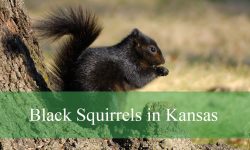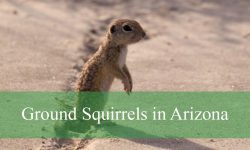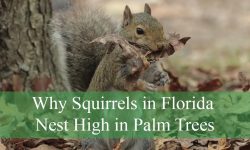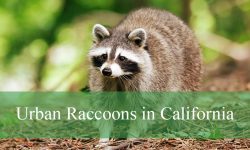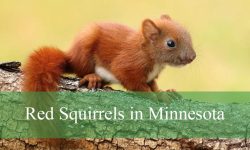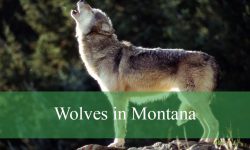Utah’s wild terrain, from red-rock deserts to alpine forests, hosts an astonishing variety of insects and arachnids. Many of them are harmless and even beneficial to the environment, helping with pollination, soil health, and pest control. However, several species found across the state can deliver painful stings, venomous bites, or spread harmful diseases. Learning to identify them is an important part of outdoor awareness.
Encounters with dangerous bugs in Utah can happen anywhere — in backyards, hiking trails, or desert campsites. Some species, like the Western Black Widow or Arizona Bark Scorpion, possess potent venom that can cause severe reactions. Others, such as ticks and mosquitoes, carry pathogens that affect both humans and animals. Understanding where these insects live and how they behave helps reduce the risk of harmful encounters.
This comprehensive guide highlights the 23 most dangerous bugs in Utah, featuring clear identification tips, behavior insights, and safety recommendations. The goal is to help you recognize potential threats quickly and enjoy Utah’s natural beauty with greater confidence and caution.
Types of Dangerous Bugs Found in Utah
Rocky Mountain Wood Tick
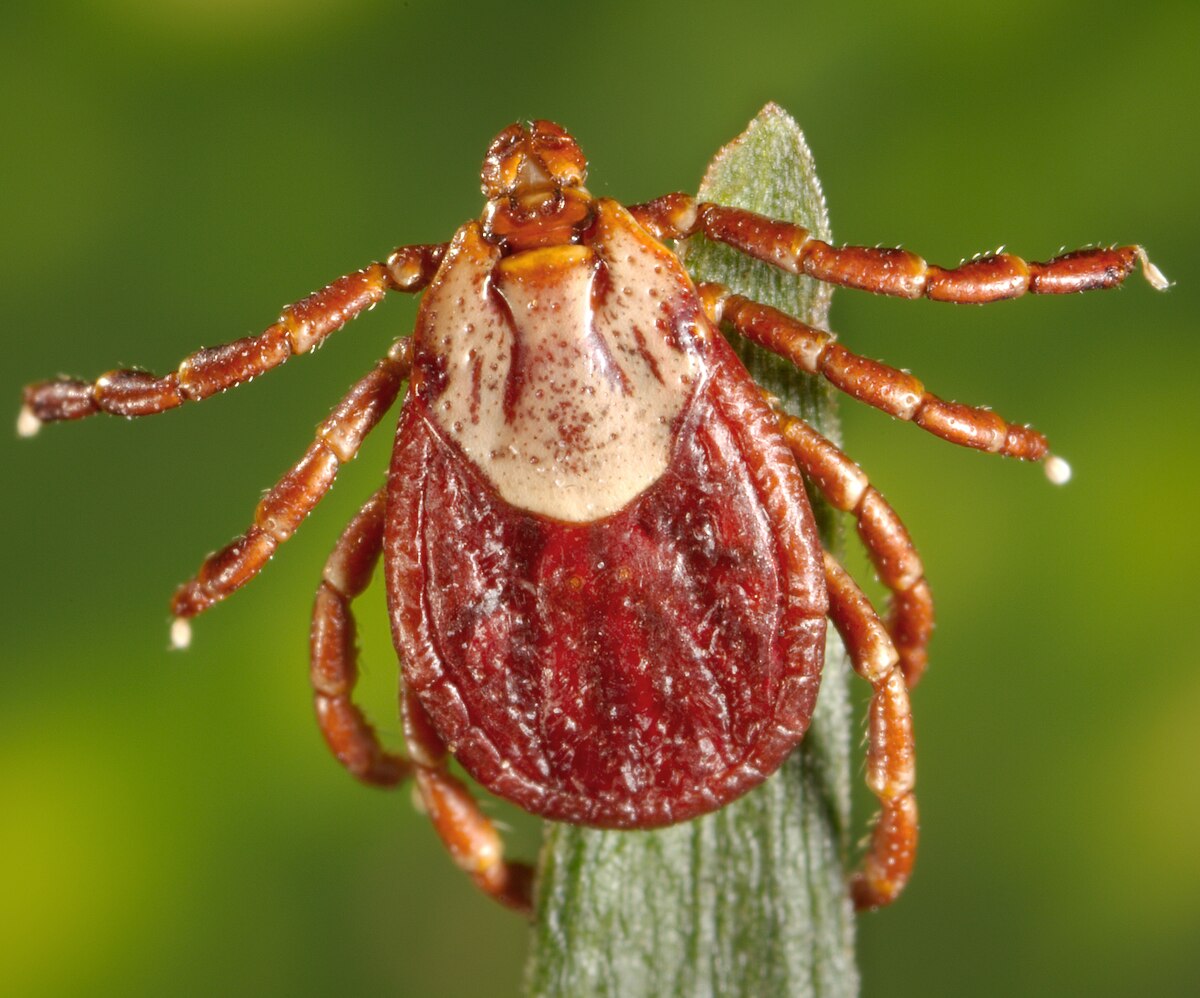
The Rocky Mountain Wood Tick is one of Utah’s most prevalent tick species, often found in grassy meadows, brushy hillsides, and forested foothills. Adult ticks have a reddish-brown body that can become grayish when engorged after feeding. They typically measure between 3 to 5 millimeters when unfed but can swell up to 15 millimeters once full of blood. Their hard, oval-shaped bodies and small heads make them easy to identify when attached to skin or fur.
This species is most active during spring and early summer, when temperatures rise and animals are more active. Both nymphs and adult ticks feed on mammals, including deer, livestock, dogs, and humans. Their bites are often painless at first, allowing them to feed unnoticed for several days. However, redness and irritation usually appear at the bite site once the tick is removed or dies.
The Rocky Mountain Wood Tick is a known vector of several diseases, most notably Colorado Tick Fever and Rocky Mountain Spotted Fever. Though not every tick carries pathogens, their potential to transmit illnesses makes them a serious health concern in Utah. Prompt removal using tweezers and cleaning the area with antiseptic can reduce the risk of infection.
Preventive measures include wearing long pants, tucking them into socks, using insect repellents containing DEET, and checking for ticks after outdoor activities. While their bites are rarely fatal, complications can occur if symptoms such as fever, fatigue, or rash develop, requiring immediate medical attention.
Western Black-Legged Tick
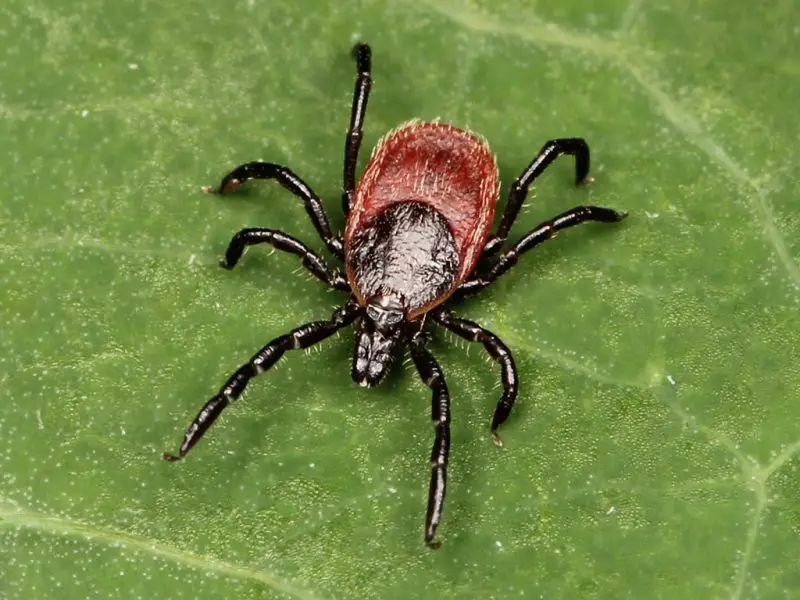
The Western Black-Legged Tick, known scientifically as Ixodes pacificus, is smaller and darker than the Rocky Mountain Wood Tick. Adults typically have an orange-brown body with dark legs and a distinctive black shield-like plate behind the head. Measuring only 2 to 3 millimeters before feeding, they can expand significantly when engorged. Their compact size makes them particularly hard to detect, especially in dense hair or clothing folds.
These ticks prefer cooler, humid environments found at higher elevations in Utah, such as mountainous areas with oak and juniper vegetation. They are more active in late fall, winter, and early spring, especially during mild, moist weather. Nymphs and adults seek hosts like rodents, deer, and sometimes humans, attaching themselves to exposed skin areas like the neck, scalp, or legs.
Though Lyme disease is rare in Utah, the Western Black-Legged Tick is the primary carrier of Borrelia burgdorferi, the bacteria responsible for the illness. The tick must remain attached for at least 24 to 48 hours to transmit the pathogen, making early removal critical. Signs of Lyme disease include a circular rash resembling a bullseye, joint pain, and fatigue.
Protecting against tick bites involves using permethrin-treated clothing, applying repellents, and performing thorough body checks after spending time in the wilderness. While most bites result only in mild irritation, the potential for disease transmission means outdoor enthusiasts should always stay cautious and informed.
Velvet Ant (Cow Killer Ant)
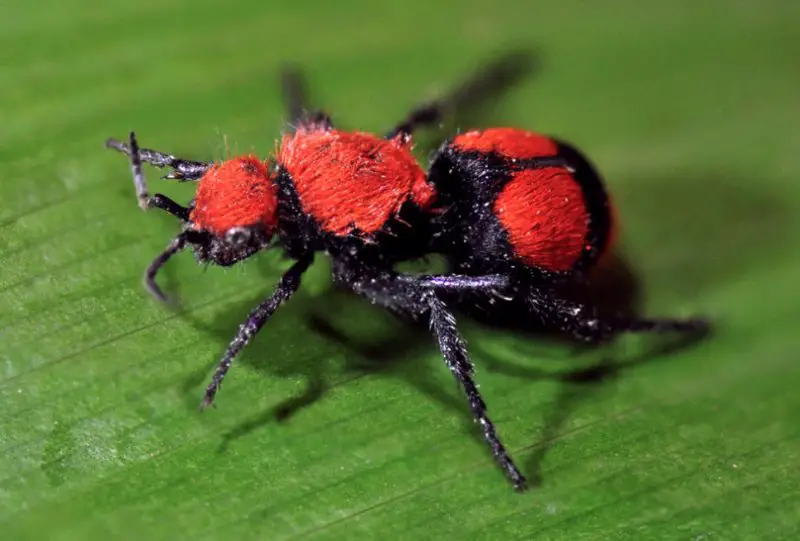
Despite its name, the Velvet Ant is not a true ant but a species of wingless wasp belonging to the Mutillidae family. Females are covered in dense, bright orange-red hair with contrasting black stripes, creating a warning coloration that deters predators. They are relatively large for wasps, measuring between 1.5 to 2 centimeters long, and their tough exoskeleton makes them resistant to attacks. Males, on the other hand, possess wings and are less commonly seen.
These wasps inhabit Utah’s dry, sandy deserts and open fields, especially areas with sparse vegetation. They are solitary creatures, often observed running swiftly on the ground in search of other insects’ nests. Females lay their eggs in the nests of ground-nesting bees or wasps, where their larvae consume the host pupae.
The Velvet Ant is notorious for its extremely painful sting, earning it the nickname “Cow Killer.” While the sting is not lethal, it delivers intense burning pain that can last for up to an hour. Unlike honeybees, Velvet Ants can sting multiple times without dying. Their venom is not dangerous to most humans but can cause swelling, redness, and allergic reactions in sensitive individuals.
To avoid being stung, people should wear closed shoes when walking through sandy areas and refrain from handling these insects. Although they play a useful ecological role in controlling other insect populations, their sting makes them one of Utah’s most feared insects.
Western Black Widow Spider
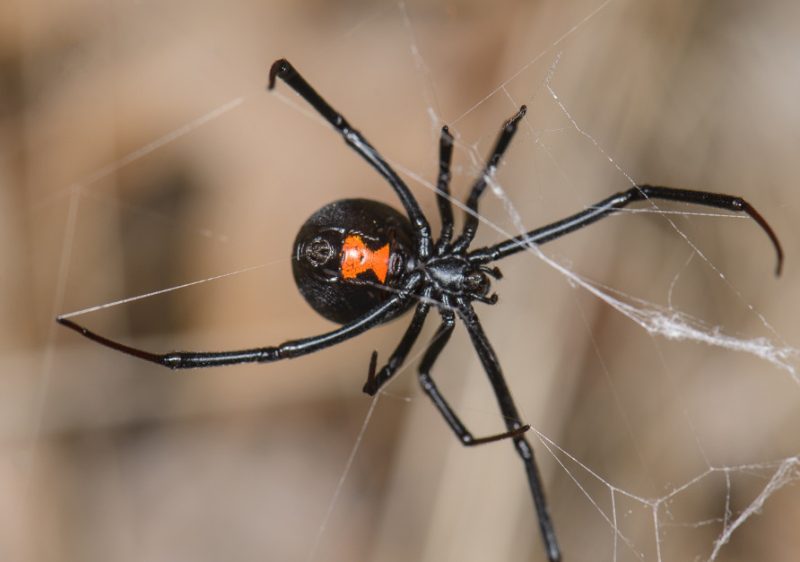
The Western Black Widow Spider (Latrodectus hesperus) is Utah’s most venomous arachnid and one of the most recognizable spiders in North America. Females are shiny black with a distinctive red or orange hourglass marking on the underside of their abdomen, while males are smaller, lighter-colored, and less venomous. Adult females measure about 1.5 inches (including leg span), making them moderately sized but still easy to identify due to their striking coloration.
These spiders favor dark, secluded habitats such as woodpiles, sheds, basements, and under rocks. They spin irregular, messy webs close to the ground and usually remain hidden during the day, becoming more active at night. Black Widows are not aggressive and only bite when threatened or trapped against the skin.
The venom of a Western Black Widow contains neurotoxins that affect the nervous system. Symptoms of a bite can include severe muscle cramps, nausea, sweating, and difficulty breathing. While fatalities are rare due to modern medical treatments, children, elderly individuals, and those with weakened immune systems are more vulnerable to complications.
If bitten, victims should remain calm, clean the bite with soap and water, and seek medical attention promptly. Avoiding dark, cluttered areas and wearing gloves when handling firewood or debris are effective preventive measures. Despite their reputation, these spiders are shy and play an important role in controlling pest insect populations.
Arizona Bark Scorpion
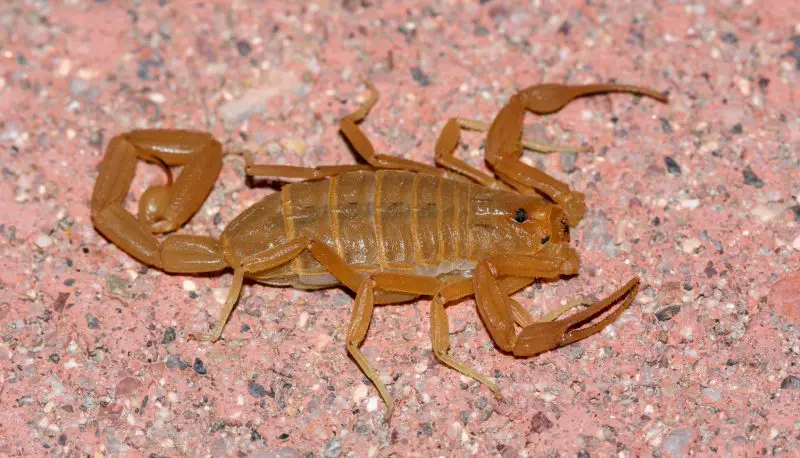
The Arizona Bark Scorpion (Centruroides sculpturatus) is the most venomous scorpion species in North America, found in Utah’s arid southern regions near rocky cliffs, dry washes, and desert vegetation. These slender, light-brown scorpions measure about 2.5 to 3 inches long and have a thin tail tipped with a curved stinger. Their coloration provides excellent camouflage against sandy desert soils, making them difficult to spot.
They are nocturnal hunters, feeding on crickets, roaches, and other small insects. During the day, they hide beneath rocks, tree bark, or debris to escape the desert heat. The Arizona Bark Scorpion is capable of climbing vertical surfaces and even entering homes through small gaps, especially during hot, dry months.
Their venom is potent, delivering an intensely painful sting that can cause numbness, swelling, and temporary paralysis. In severe cases, victims may experience difficulty breathing or muscle twitching. While deaths are extremely rare, medical treatment is recommended for young children, the elderly, or individuals with allergic sensitivities. Antivenom is available in hospitals across the southwestern United States.
Preventing encounters involves sealing home entry points, removing clutter, and shaking out shoes or clothing before wearing them. Despite their dangerous sting, these scorpions play a valuable role in controlling insect populations in desert ecosystems. Caution and awareness are the best ways to coexist safely with them in Utah’s desert landscapes.
Desert Recluse Spider

The Desert Recluse Spider (Loxosceles deserta) is a close relative of the infamous Brown Recluse, inhabiting the dry, rocky landscapes of southwestern Utah. These spiders are light brown to tan, with a distinct violin-shaped marking on their cephalothorax, though this may be faint in some individuals. Adults typically measure between 8 to 12 millimeters in body length, with long, slender legs that give them a delicate appearance. Their eyes are arranged in three pairs, forming a semicircular pattern — a key feature for identification.
The Desert Recluse prefers undisturbed areas such as woodpiles, sheds, basements, and crevices in rocks. They are nocturnal hunters, preying on small insects and other spiders. During the day, they hide in silk retreats, emerging only at night to feed. Their shy nature means bites usually occur when they are accidentally pressed against the skin, such as when putting on clothes or shoes left on the floor.
The venom of the Desert Recluse contains necrotic agents that can destroy soft tissue around the bite site. Initial symptoms may be mild, with redness or a small blister, but the area can progress into an ulcer or open sore over several days. Severe cases may require medical attention to prevent infection or tissue damage. However, not all bites result in necrosis, and many heal without complications.
Prevention involves keeping storage areas clean, shaking out clothing before wearing, and using gloves when moving boxes or wood. Although these spiders are venomous, they are not aggressive and will only bite in self-defense. Awareness and caution are the best defenses against their potentially dangerous bite.
Kissing Bug (Triatomine Bug)

The Kissing Bug, or Triatomine Bug, is a nocturnal blood-feeding insect found occasionally in southern Utah. It earns its name from its habit of biting near the lips or face of sleeping humans. These bugs are about 2 to 3 centimeters long, with flat, oval bodies and long legs. Their coloration varies from dark brown to black, often with orange or red markings along the edges of their abdomen.
Kissing Bugs thrive in warm, dry habitats, often living in rodent nests, woodpiles, or beneath porches. They are attracted to artificial lights and may enter homes through open windows or cracks in walls. At night, they feed painlessly on the blood of mammals, including humans, often without being noticed. After feeding, they may defecate near the bite site — the main route through which Trypanosoma cruzi, the parasite that causes Chagas disease, can enter the body.
In the United States, cases of Chagas disease are extremely rare, but the risk remains in areas where the bugs are established. Symptoms can range from mild swelling and fever to chronic cardiac and digestive complications if untreated. The bite itself can also cause itching, redness, and allergic reactions in sensitive individuals.
To minimize exposure, homeowners should seal entry points, install window screens, and reduce outdoor lighting near bedrooms. Regularly checking for signs of these insects around homes and pet sleeping areas can also prevent infestations. While bites are uncommon, their potential to transmit disease makes them one of Utah’s more concerning nocturnal insects.
Blister Beetle
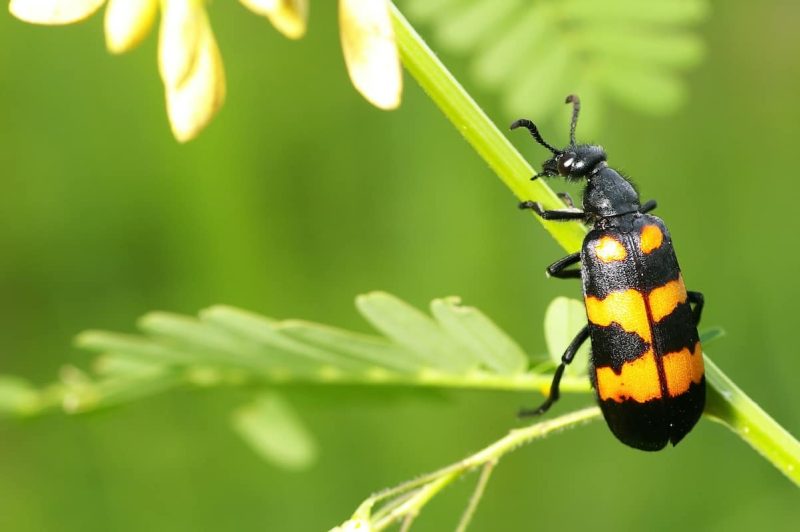
Blister Beetles belong to the Meloidae family and are recognized by their elongated, narrow bodies and soft, leathery wings. These beetles vary in color, ranging from gray and black to metallic green or striped patterns, depending on the species. Adults typically measure between 1 to 2.5 centimeters long and have flexible necks that make them appear slightly hunched.
Found throughout Utah, especially in grasslands and agricultural fields, Blister Beetles are active during warm summer months. They feed on flowers, crops, and weeds, with some species known to gather in large numbers on alfalfa and clover plants. When disturbed, they release a toxic chemical called cantharidin — a blistering agent used historically in medicine but extremely irritating to skin and mucous membranes.
Contact with Blister Beetles can cause severe skin reactions, including redness, itching, and fluid-filled blisters. Crushing the beetle on bare skin releases more toxin, worsening the injury. Livestock, particularly horses, are at high risk if they consume hay contaminated with dead beetles, as cantharidin is lethal even in small doses. For humans, ingestion can lead to gastrointestinal distress and kidney damage.
Avoiding contact is crucial. Farmers and gardeners should wear gloves and avoid handling Blister Beetles directly. While they pose little direct danger when left alone, their toxin makes them one of the most hazardous insects to encounter accidentally in Utah’s fields and farms.
Giant Water Bug
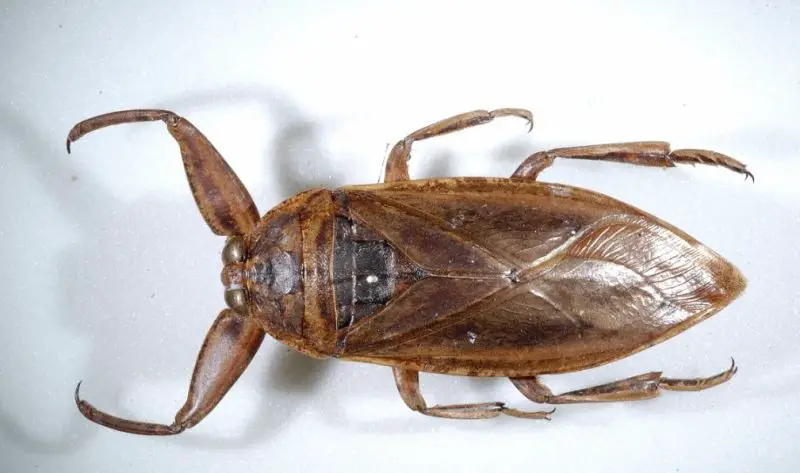
The Giant Water Bug (Lethocerus americanus), sometimes nicknamed “toe-biter,” is a large aquatic insect commonly found in ponds, marshes, and slow-moving streams across Utah. Adults can reach lengths of up to 6 centimeters, making them one of the largest true bugs in North America. They have a flat, oval-shaped body, dark brown coloration, and strong, raptorial front legs adapted for grasping prey.
These insects are skilled hunters, feeding on fish, tadpoles, and other aquatic invertebrates. They lie motionless near the surface of the water, waiting to ambush passing prey. Using their powerful front legs, they inject digestive saliva through a sharp beak, liquefying the victim’s tissues before sucking them out. Although they breathe through air tubes on their abdomen, they can remain submerged for extended periods while hunting.
When disturbed or handled, Giant Water Bugs can deliver an excruciatingly painful bite with their piercing mouthparts. The bite can cause swelling, numbness, and burning sensations that last several hours but is not venomous or medically dangerous. Despite their intimidating appearance, these insects pose minimal long-term risk to humans.
They are attracted to lights at night and sometimes fly toward illuminated areas, leading to accidental encounters. To avoid painful bites, people should exercise caution when wading in shallow waters or handling insects near ponds. As predators, Giant Water Bugs play a valuable ecological role by keeping aquatic pest populations under control.
Assassin Bug
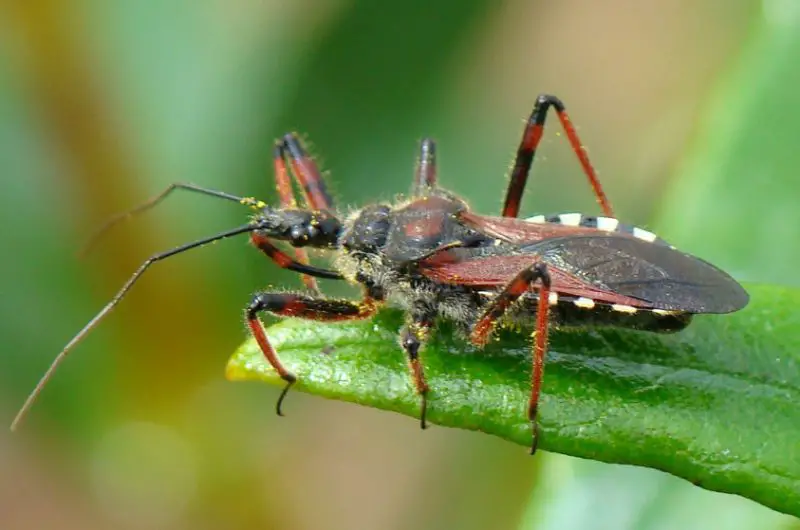
The Assassin Bug, belonging to the Reduviidae family, is a predatory insect with a distinctive elongated body and narrow head ending in a sharp, curved proboscis. Measuring 1.5 to 3 centimeters long, they often display dark brown, gray, or reddish coloration, blending well into their surroundings. Their name comes from their stealthy hunting technique, using speed and precision to ambush unsuspecting prey.
These insects are found throughout Utah in gardens, forests, and grasslands, where they prey on caterpillars, beetles, and other soft-bodied insects. They typically remain hidden on leaves or stems until a target approaches. Once captured, the Assassin Bug injects venom through its proboscis, liquefying the prey’s internal tissues for easy consumption.
While beneficial as natural pest controllers, Assassin Bugs can inflict painful bites if mishandled. Their bite is defensive rather than aggressive, causing immediate sharp pain followed by redness and swelling. In rare cases, allergic reactions may occur. Unlike the Kissing Bug, Assassin Bugs do not transmit diseases in the U.S., but their sting-like bite can be surprisingly severe.
Avoid handling these insects with bare hands and use caution when working in vegetation where they may hide. Despite their intimidating behavior, Assassin Bugs contribute to ecological balance by controlling crop-damaging pests. Their presence is a sign of a healthy, biodiverse ecosystem — but one that should be admired from a safe distance.
Harvester Ant
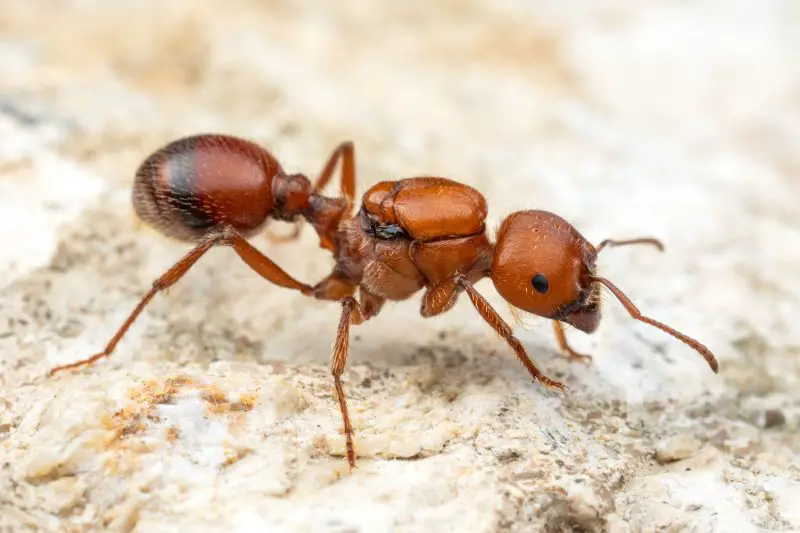
The Harvester Ant is a robust and aggressive ant species commonly found in Utah’s dry, open landscapes, including deserts, grasslands, and scrublands. These ants are reddish-brown to dark red in color, with large heads and strong mandibles adapted for gathering seeds — their primary food source. Workers range from 5 to 7 millimeters in length, while queens can grow over 1 centimeter. Their colonies form large, flat mounds often surrounded by cleared soil, a telltale sign of their nesting sites.
Harvester Ants are most active during warm daylight hours, particularly from late spring through early fall. They forage in organized trails, carrying seeds and plant material back to the nest. Although they play an important ecological role in seed dispersal and soil aeration, they are highly territorial and will aggressively defend their colonies when disturbed.
The sting of a Harvester Ant is intensely painful and can cause localized redness, swelling, and itching. Their venom contains alkaloids that can trigger allergic reactions in some individuals, occasionally leading to severe symptoms like dizziness, difficulty breathing, or anaphylaxis. Fortunately, they do not sting unless provoked, but once they do, they can deliver multiple stings in quick succession.
Avoiding their nests is the best form of prevention. When walking or hiking in arid regions, wear closed shoes and watch for cleared circles of bare soil that indicate colonies. Though dangerous when threatened, Harvester Ants are an essential part of Utah’s desert ecosystems, contributing to plant diversity and soil health.
Paper Wasp
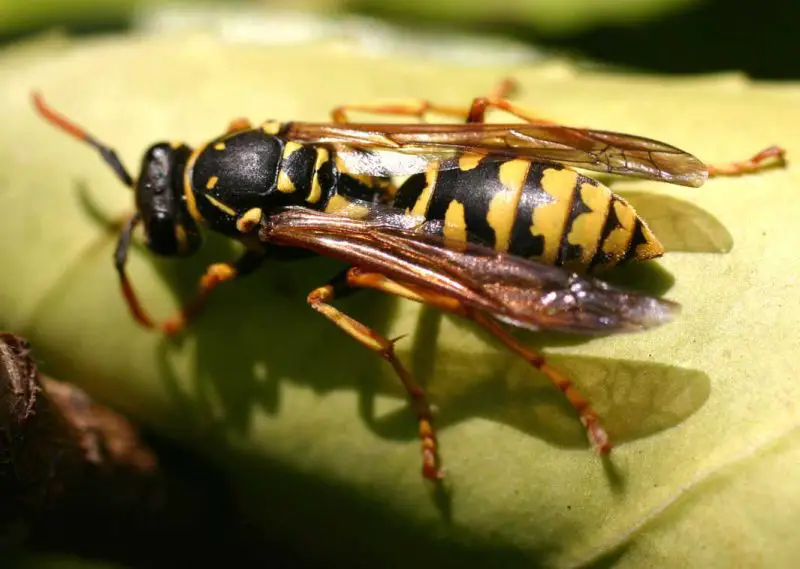
The Paper Wasp is a slender, long-legged insect recognized by its narrow waist and distinct yellow and brown or reddish markings. Adults typically measure about 1.8 to 2.5 centimeters in length. They build open, umbrella-shaped nests made of a papery material created from chewed wood fibers mixed with saliva. These nests are often found under eaves, porch ceilings, or in other sheltered areas around homes and gardens.
Paper Wasps are social insects that live in colonies, each led by a queen and supported by worker wasps. They are beneficial predators that feed on caterpillars, flies, and other pest insects, making them helpful for natural pest control. Despite their ecological benefits, they are defensive around their nests and will sting if they perceive a threat.
The sting of a Paper Wasp is painful and delivers venom that can cause burning sensations, redness, and swelling. For individuals allergic to wasp venom, stings can result in severe reactions such as hives or anaphylaxis. Their stings are typically single but highly effective for defense, and they will pursue intruders if provoked.
To prevent stings, homeowners should inspect eaves and structures for early nest formations in spring and remove them before colonies grow large. Wearing protective clothing when working outdoors and avoiding sudden movements near nests can also help prevent attacks. Although often feared, Paper Wasps are vital contributors to natural insect population control.
Yellowjacket Wasp
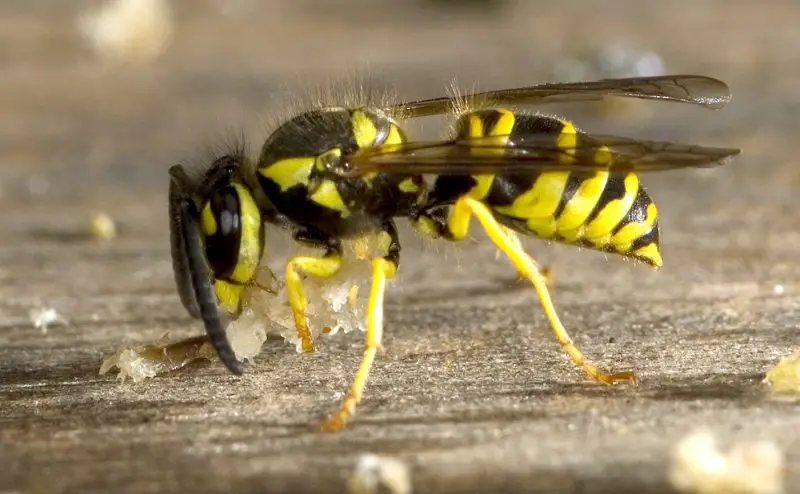
Yellowjackets are compact, brightly colored wasps with black and yellow banding on their abdomens. Measuring about 1.2 to 1.5 centimeters in length, they have a stocky build and smooth bodies, distinguishing them from bees. These wasps nest in the ground, wall voids, or tree cavities, forming large colonies that can contain thousands of individuals.
During early summer, Yellowjackets are primarily scavengers and predators, feeding on insects and carrion. However, by late summer and fall, food sources diminish, and they become more aggressive in seeking sugary foods around humans. Their bold behavior makes them a common nuisance at picnics, garbage bins, and outdoor events across Utah.
Yellowjackets are capable of stinging multiple times, injecting venom that causes sharp pain, swelling, and itching. Their venom contains proteins that can provoke allergic reactions, ranging from mild irritation to life-threatening anaphylaxis. Because of their defensive nature, any disturbance near their nest can trigger a coordinated attack by multiple wasps.
Avoiding sweet drinks and food outdoors, keeping trash bins sealed, and wearing light-colored clothing can reduce encounters. Professional pest control may be required to remove large nests safely. Although dangerous when provoked, Yellowjackets play a natural role in controlling pest populations, balancing their aggression with ecological usefulness.
Bald-Faced Hornet
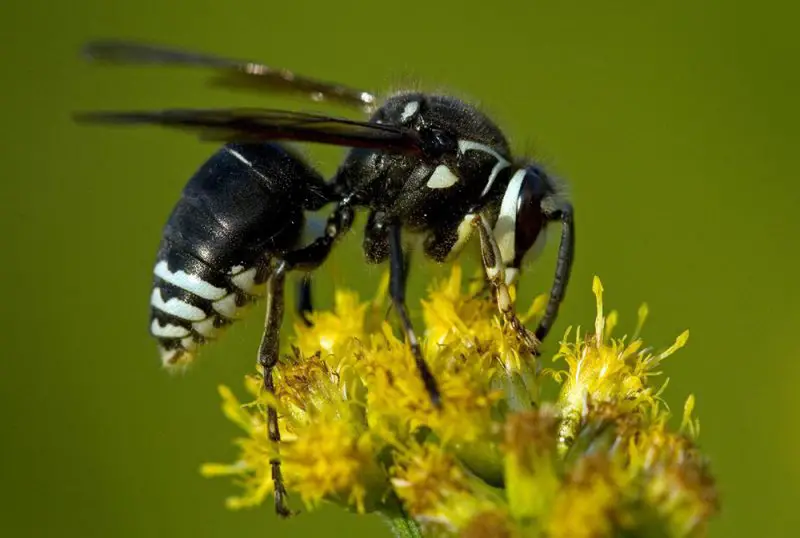
The Bald-Faced Hornet (Dolichovespula maculata) is a large and striking insect, easily recognized by its black body and white markings on the face and abdomen. Adults typically measure 1.5 to 2 centimeters in length and have a noticeably thick, robust body. Despite its name, it is technically a type of yellowjacket rather than a true hornet.
Bald-Faced Hornets build large, football-shaped paper nests in trees, shrubs, or under roof overhangs. These gray nests, made from chewed wood pulp, can reach over a foot in length and house hundreds of hornets. They are most active during late summer when colonies are at their peak. The hornets are beneficial predators that feed on flies, caterpillars, and other insects but are known for their intense nest defense.
When threatened, Bald-Faced Hornets attack in groups, delivering multiple painful stings. Their venom causes immediate burning, swelling, and tenderness at the sting site, which may persist for several days. For allergic individuals, reactions can be severe and require medical attention. Because they can sting repeatedly without losing their stingers, they are considered one of Utah’s most aggressive stinging insects.
Avoiding nests and giving these hornets plenty of space is crucial. Never attempt to remove a nest during daylight hours when hornets are active. Despite their fearsome reputation, Bald-Faced Hornets are valuable pollinators and play a key role in reducing harmful insect populations.
European Hornet
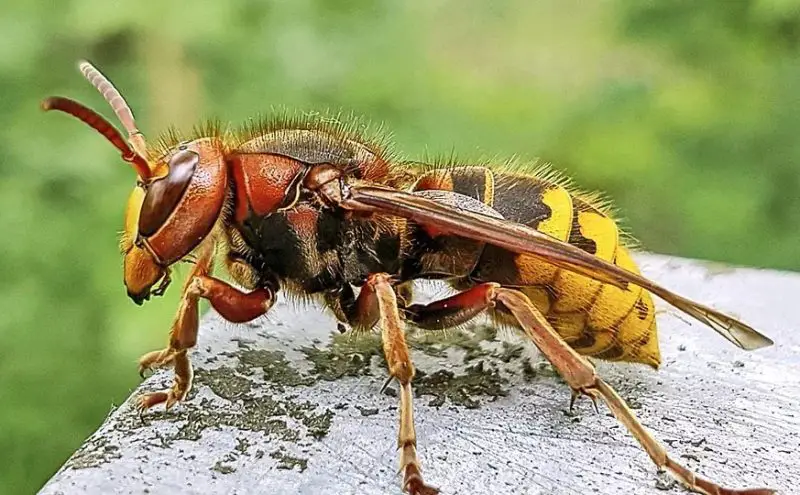
The European Hornet (Vespa crabro) is a non-native species introduced from Europe but now established in parts of Utah and the broader United States. It is the largest social wasp in the region, with adults measuring up to 3.5 centimeters long. Their bodies are brownish-red with yellow abdominal stripes, and their wings have a reddish hue. Despite their intimidating appearance, they are typically less aggressive than Yellowjackets unless their nest is threatened.
European Hornets build large paper nests in hollow trees, attics, and wall cavities, often near wooded areas. Colonies can contain several hundred individuals by mid to late summer. These hornets are active both day and night, which sets them apart from most other wasps. They feed on insects, fruit, and tree sap, occasionally damaging crops or ornamental plants.
Their sting is painful and delivers a strong dose of venom that can cause swelling, itching, and redness. Multiple stings or allergic reactions can be dangerous, and medical treatment is recommended if symptoms persist or worsen. Unlike bees, they can sting repeatedly, making encounters with them potentially serious if provoked.
Avoid approaching or disturbing their nests, especially during late summer when hornets are most defensive. Keeping outdoor lights dim can help reduce nighttime attraction. Although introduced, European Hornets play a role in controlling pest insects, balancing their invasive status with beneficial ecological behavior.
Carpenter Bee
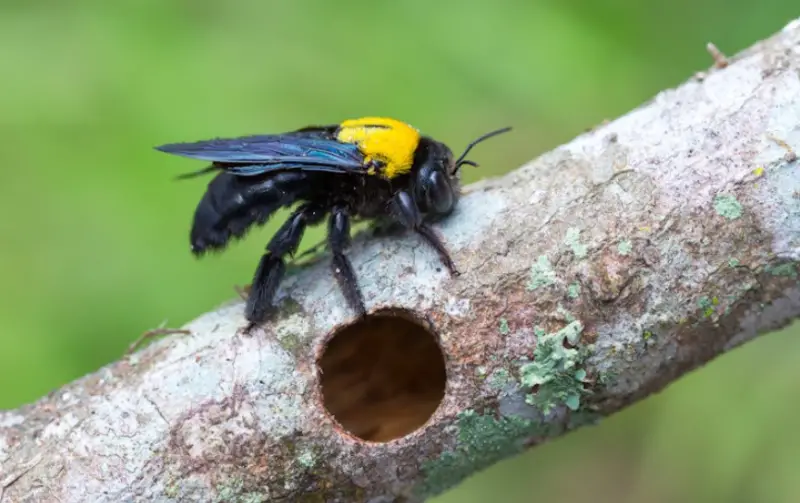
The Carpenter Bee is a large, robust bee that closely resembles a bumblebee but can be distinguished by its shiny, hairless black abdomen. Adults measure about 2 to 2.5 centimeters in length and have a metallic sheen that glimmers in sunlight. Their heads are large, and their powerful mandibles are adapted for drilling into wood — a behavior that gives them their name. These bees are commonly found around wooden structures such as decks, fences, and eaves, where they bore small, round holes to create nesting tunnels.
Carpenter Bees are solitary, with females constructing and maintaining individual nests, while males patrol nearby areas to guard territory. They are active during spring and early summer, particularly in sunny, warm conditions. While males often hover aggressively near people or intruders, they lack stingers and are harmless. Females, however, can sting if handled or provoked, though they are generally non-aggressive and rarely sting unprovoked.
Their stings are painful but short-lived, causing mild swelling or redness at the site. Carpenter Bees pose little threat to humans but can cause structural damage over time if they repeatedly tunnel into untreated wood. Signs of infestation include piles of sawdust, small round holes in wooden surfaces, and buzzing near entry points.
To prevent damage, wood can be painted, sealed, or treated with insect repellent coatings. Despite their nesting habits, Carpenter Bees are valuable pollinators that contribute significantly to garden and wildflower pollination in Utah. Their gentle nature and ecological benefits make them more helpful than harmful when left undisturbed.
Honey Bee

Honey Bees (Apis mellifera) are among the most recognizable insects in the world and play a crucial role in pollination and agriculture. They are medium-sized, golden-brown bees with black stripes and fuzzy bodies that help them collect pollen efficiently. Adult workers measure about 1.2 centimeters long, while queens are slightly larger. They are social insects living in colonies that can number up to 60,000 individuals, all working cooperatively to maintain the hive.
These bees construct wax combs inside hollow trees, beehives, or man-made boxes, where they produce honey and rear their young. Honey Bees are usually gentle and focused on foraging, collecting nectar and pollen from flowers. They sting only when provoked or when defending their hive from perceived threats. Once a bee stings, its barbed stinger remains in the skin, and the bee dies shortly afterward.
The sting of a Honey Bee causes immediate pain, redness, and swelling. For most people, the discomfort subsides within a few hours, but those allergic to bee venom may experience severe reactions such as hives, dizziness, or anaphylaxis. Multiple stings can also pose a danger to children, pets, or individuals with sensitivity. Prompt removal of the stinger and application of ice can help reduce symptoms.
Honey Bees are vital for pollinating crops and wild plants, making them indispensable to ecosystems and food production. Maintaining safe distances from hives and avoiding sudden movements near bees helps prevent stings while allowing these pollinators to thrive peacefully.
Fire Ant (Imported)
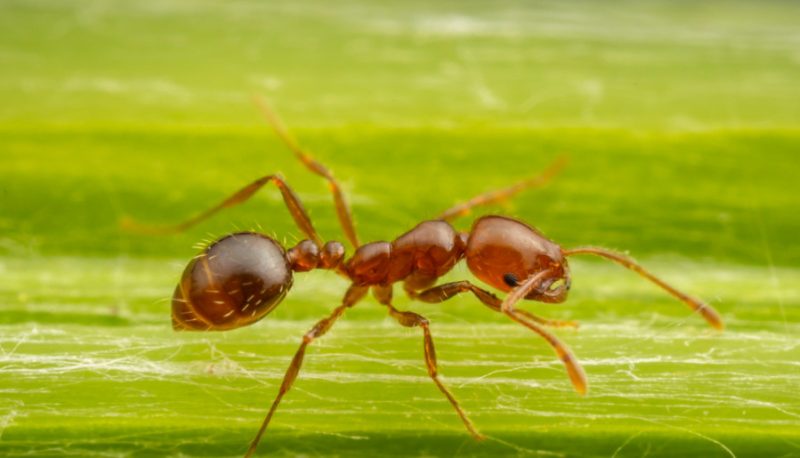
The Imported Fire Ant (Solenopsis invicta) is an invasive and highly aggressive species found sporadically in southern Utah. These ants are reddish-brown with darker abdomens and range from 2 to 6 millimeters in length, depending on their role in the colony. Their nests appear as large, loose mounds of soil without visible openings and are often located in sunny, open areas such as lawns, fields, and roadsides.
Fire Ant colonies contain thousands of workers and multiple queens, making them difficult to eliminate once established. They are extremely defensive and will swarm aggressively when their nest is disturbed. Workers latch onto skin with their mandibles and deliver multiple stings through a venomous stinger, often in circular patterns. Each sting causes intense burning pain followed by the formation of white pustules.
Their venom contains alkaloids that can cause allergic reactions ranging from mild itching to life-threatening anaphylaxis in sensitive individuals. Reactions can worsen with repeated exposure, and medical treatment is advised for extensive stings or systemic symptoms. Pets and livestock are also vulnerable to attacks, particularly young or immobile animals.
Prevention involves careful monitoring and early detection of nests, especially in newly infested regions. Avoid disturbing mounds, and use professional pest control if necessary. Although small, Fire Ants are among the most dangerous stinging insects in Utah due to their aggressive nature and painful, venomous stings.
Cicada Killer Wasp
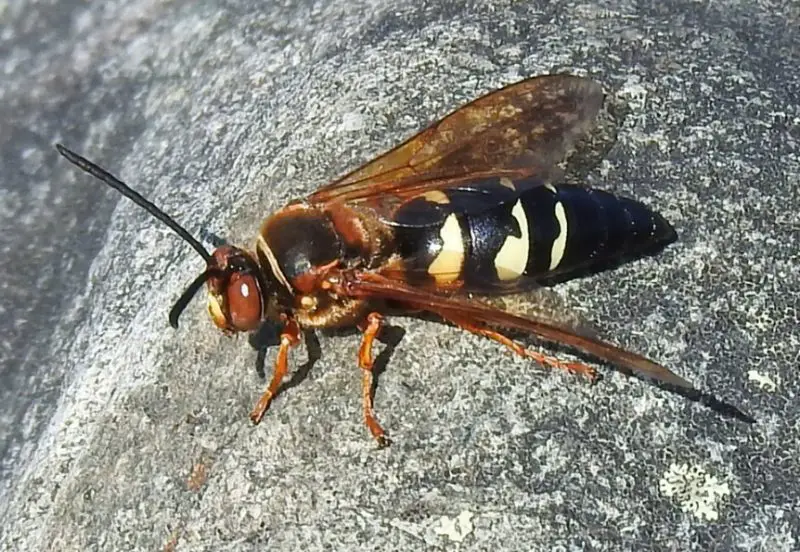
The Cicada Killer Wasp (Sphecius speciosus) is a large solitary wasp that can reach lengths of 3 to 4 centimeters, making it one of the largest wasps in North America. Its black body is marked with bold yellow stripes, and its transparent amber wings give it a striking appearance. Despite its intimidating size, it is rarely aggressive toward humans. Males are territorial and often buzz around intruders but are harmless, while females carry a sting that is used primarily for hunting.
Cicada Killers are typically found in sandy or loose soils across Utah, where they dig burrows to create nests. Females hunt cicadas in midsummer, paralyzing them with a sting and dragging them into the burrow as food for their larvae. They are active during hot, sunny days and often seen flying low over lawns or open fields, especially where cicadas are abundant.
The sting of a Cicada Killer is painful but rare, as the wasp stings only if handled roughly or accidentally trapped. The pain is sharp but short-lived, and reactions are usually limited to mild swelling and redness. Their solitary nature and preference for avoiding conflict make them a low-risk insect despite their fearsome appearance.
Managing populations involves minimal intervention since Cicada Killers do not form colonies or persistently infest areas. Simply avoiding their burrows is sufficient. They are beneficial predators that help control cicada populations and play a vital role in maintaining ecological balance in Utah’s summer environments.
Horsefly

Horseflies are large, fast-flying insects known for their painful bites and persistent behavior. Adult females are about 1 to 2.5 centimeters long, with broad heads, large iridescent eyes, and stout gray or black bodies. Males feed on nectar, while females require blood meals to reproduce. Their mouthparts are designed for cutting skin and sucking blood, which makes their bites particularly painful.
These flies thrive near wetlands, streams, and livestock pastures across Utah, especially during late spring and summer. They are most active during hot, sunny days and often target large mammals such as horses, cattle, and deer. When food sources are scarce, they may also bite humans, usually around the neck, arms, or legs. Their bites leave raised, itchy welts that can become infected if scratched.
Unlike mosquitoes, Horseflies do not inject anesthetics, so their bites are immediately felt. The wound often bleeds freely, and irritation can last for days. While they do not transmit diseases in Utah, their bites can cause secondary infections and allergic reactions in sensitive individuals.
To avoid bites, wear light-colored clothing, apply insect repellent, and avoid stagnant water or dense vegetation during peak fly activity. Although bothersome and painful, Horseflies are important components of natural ecosystems, serving as pollinators and prey for birds, bats, and other insect-eating species.
Deerfly

Deerflies are smaller relatives of horseflies, typically measuring between 6 to 10 millimeters in length. They have broad, colorful, patterned wings and large, bright green or golden eyes that give them a distinctive appearance. Their bodies are usually gray or brown with light stripes across the abdomen. Like horseflies, only the females bite, using scissor-like mouthparts to slice the skin and feed on blood. Males, in contrast, subsist on nectar and plant juices.
These flies are found across Utah, particularly in wetlands, forests, and along rivers where humidity is higher. They are most active during the summer months, especially on warm, sunny days. Deerflies are extremely persistent once they detect a host, often circling repeatedly and biting exposed areas such as the head, neck, and arms. Their attraction to movement and dark colors makes outdoor activities in infested areas uncomfortable.
A Deerfly bite is sharp and painful, leaving a swollen, red welt that may bleed freely. Scratching the bite can lead to infection, and in some cases, these flies can transmit bacteria responsible for diseases such as tularemia (rabbit fever). Although disease transmission in Utah is relatively rare, their bites remain a nuisance and health concern for outdoor enthusiasts and livestock owners alike.
Preventing bites involves wearing light-colored clothing, using insect repellents containing DEET or picaridin, and avoiding heavily infested areas during peak activity. While bothersome, Deerflies are part of Utah’s natural ecosystem, serving as prey for birds, bats, and dragonflies despite their irritating habits.
Mosquito (Western Species)

Western mosquito species, including Culex tarsalis, are among Utah’s most widespread and well-known insects. These mosquitoes are small, typically about 4 to 6 millimeters long, with slender bodies, long legs, and narrow wings covered in tiny scales. Their coloration varies from gray to brown with white striping on the legs or abdomen, depending on the species. Females are the blood-feeding sex, while males feed exclusively on nectar.
Mosquitoes thrive near stagnant water, where females lay their eggs in ponds, irrigation ditches, birdbaths, and even puddles. They are most active from dusk to dawn, although some species also bite during the day. In Utah, mosquito populations peak in late spring and summer following rain or irrigation. These insects are especially abundant in agricultural and suburban areas with poor drainage.
The bite of a mosquito causes mild pain, itching, and swelling due to an allergic reaction to its saliva. However, the main danger comes from disease transmission. Western mosquito species are known carriers of the West Nile Virus, which can cause flu-like symptoms and, in severe cases, neurological complications. Horses and humans are most at risk, making prevention essential in affected areas.
Reducing mosquito exposure includes eliminating standing water sources, using insect repellents, and installing window screens. Public health programs in Utah regularly monitor and control mosquito populations to prevent outbreaks. Despite their reputation, mosquitoes are an important food source for bats, birds, and fish, forming a vital link in aquatic and terrestrial ecosystems.
Jerusalem Cricket (Potato Bug)

The Jerusalem Cricket, often nicknamed the Potato Bug, is one of Utah’s most intimidating-looking insects. Despite its name, it’s not actually a true cricket and has no connection to Jerusalem. Belonging to the genus Stenopelmatus, this large, flightless insect can grow up to 2.5 inches long. It has a rounded, shiny, amber-colored head, powerful jaws, and striped abdomen — features that make it look quite fearsome. You’ll typically find them under rocks, logs, or in moist soil where they feed on roots and decaying organic matter.
Although the Jerusalem Cricket doesn’t possess venom or toxins, it can bite painfully if handled carelessly. Its strong mandibles are designed for digging and chewing plant material but can easily break human skin. The bite may cause short-term swelling or mild bleeding, but it’s not medically significant. These insects are nocturnal and prefer to stay hidden during the day, emerging at night after rain or when the soil is damp.
In Utah, Jerusalem Crickets are found in dry, sandy, and mountainous regions, often near gardens or rocky slopes. They play a valuable ecological role by aerating soil and decomposing organic debris. While their size and appearance may alarm people, they’re generally harmless unless provoked. If encountered, it’s best to gently relocate them using a stick or container rather than bare hands.
Tips for Staying Safe from Dangerous Bugs in Utah
1. Wear Protective Clothing
When exploring Utah’s grassy fields, deserts, or wooded areas, always wear long pants, closed-toe shoes, and long-sleeved shirts. Light-colored clothing makes it easier to spot ticks or crawling insects. For extra protection, tuck your pants into your socks and use gaiters when hiking through brushy terrain.
2. Use Insect Repellent Effectively
Apply insect repellents containing DEET, picaridin, or permethrin before heading outdoors. DEET-based repellents work best against mosquitoes, ticks, and biting flies. Permethrin can also be used on clothing and gear for long-lasting protection, but never apply it directly to skin.
3. Avoid Disturbing Nests or Burrows
Many dangerous insects and arachnids — such as wasps, scorpions, and spiders — build their nests or shelters in secluded areas. Avoid overturning rocks, logs, or debris, and use a flashlight when working in dark sheds or garages. If you spot a nest near your home, contact pest control rather than removing it yourself.
4. Check for Ticks Regularly
After spending time outdoors, thoroughly inspect your skin, scalp, and clothing for ticks. Pay special attention to warm, hidden areas such as the armpits, behind the knees, and around the waist. Remove any attached tick promptly with fine-tipped tweezers, pulling steadily without twisting.
5. Keep Your Living Spaces Clean
Maintain a tidy home and yard to reduce insect habitats. Store firewood away from walls, seal entry points, and eliminate standing water that attracts mosquitoes. Regularly mow grass, trim shrubs, and clear clutter to deter insects and spiders from nesting near your home.
6. Seek Medical Attention if Bitten or Stung
If you experience severe swelling, dizziness, difficulty breathing, or spreading redness after a bite or sting, seek medical care immediately. Allergic reactions can develop quickly and become life-threatening without treatment. When possible, capture or photograph the insect for identification.
FAQs About Dangerous Bugs in Utah
What are the most dangerous bugs in Utah?
Some of the most dangerous bugs in Utah include the Western Black Widow Spider, Arizona Bark Scorpion, Rocky Mountain Wood Tick, Velvet Ant, and Yellowjacket Wasp. These species can deliver painful stings or bites and, in some cases, transmit diseases or cause allergic reactions.
Can ticks in Utah spread Lyme disease?
Yes, but it’s rare. The Western Black-Legged Tick can carry the bacteria that cause Lyme disease, though most cases in Utah are mild or isolated. Other tick species, like the Rocky Mountain Wood Tick and Soft Tick, may transmit diseases such as Colorado Tick Fever or relapsing fever.
What should I do if a scorpion stings me in Utah?
If stung by an Arizona Bark Scorpion, stay calm and wash the area with soap and water. Apply a cold compress to reduce pain and swelling. Seek medical attention immediately, especially for children, elderly people, or anyone experiencing numbness, difficulty breathing, or muscle spasms.
Are Velvet Ants really ants?
No. Velvet Ants, also known as “Cow Killer Ants,” are actually wingless wasps. They are solitary and covered in dense red and black hairs. Though their sting is extremely painful, it is not fatal. Avoid touching or trapping them to prevent stings.
How can I prevent mosquito bites in Utah?
To prevent mosquito bites, eliminate standing water near your home, use insect repellent, and wear long sleeves during dusk and dawn when mosquitoes are most active. Utah mosquitoes can transmit West Nile Virus, so consistent prevention is important.
Do any bugs in Utah cause allergic reactions?
Yes. Insects like wasps, hornets, fire ants, and bees can cause allergic reactions that range from mild swelling to severe anaphylaxis. If you’ve experienced strong allergic responses before, carry an epinephrine auto-injector and seek immediate medical help if stung.
Are spider bites in Utah dangerous?
Only a few spiders in Utah pose serious health risks. The Western Black Widow Spider and the Desert Recluse Spider are the most concerning. Their venom can cause pain, muscle cramps, or tissue damage, but fatalities are extremely rare with modern medical care.
What’s the best way to keep dangerous insects out of my home?
Seal cracks and gaps around doors, windows, and foundations. Keep outdoor lights dim, as they attract bugs like kissing bugs and moths. Store food securely and remove clutter that provides hiding spots for insects or arachnids.
Final Safety Reminder
Utah’s landscapes are rich with wildlife, including insects that play vital roles in ecosystems. While some can be harmful, understanding their behavior and taking preventive steps allows humans and nature to coexist safely. Always observe from a distance, stay cautious, and respect the habitats of these fascinating yet formidable creatures.

